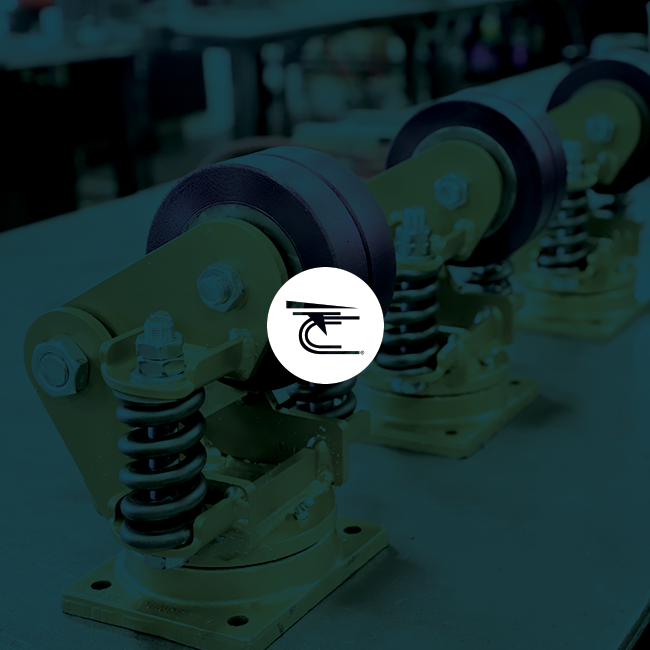

For polyurethane treaded wheels, the prominent mode of failure is the bond between the tread and hub. The mechanism leading to bond failure is excessive heat in the bond region. Such heat is typically generated by the tread itself. Subjected to continuous deformation, the urethane tread transforms this mechanical deformation, through the hysteresis of the material, into thermal energy. As the temperature rises, the bond degrades ultimately leading to failure.
Polyurethane tires can build up heat from high speeds, high loads or a combination of both. The large impact of load and speed on a wheel makes it important to know the operating conditions in order to avoid tire failure.
Caster Concepts has developed a model to predict failure in polyurethane-treaded wheels based on the operating conditions of the wheel (i.e., load speed, ambient temperature). This formula provides a better understanding of polyurethane tires and how they will react in different applications, which allows CCI engineers to spec out the right wheel for any customer’s application.
Caster Concepts engineering team has developed and proven the effectiveness of a model to predict failure in polyurethane-treaded wheels based on the operating conditions of the wheel (i.e., load, speed, ambient temperature and the type of polyurethane). This formula provides a better understanding of polyurethane tires and how they will react in dynamic applications, which allows CCI engineers to specify the right polyurethane wheel for any customer’s application.
For further information and a custom designed polyurethane wheel for your most demanding application please call 517-680-7950 or email customercentral@casterconcepts.com.